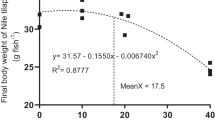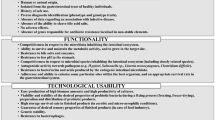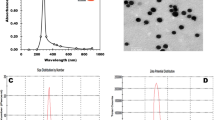Abstract
The aim of the study was to evaluate the activity of glutathione peroxidase (GSH-Px) and the concentration of selenium in Holstein–Friesian cows at different stages of lactation. Selenium was determined spectrofluorimetrically and GSH-Px activity using a Sigma CGP1 Glutathione Peroxidase Cellular Activity Assay kit. Mean serum selenium concentration was highest in early-lactation multiparous cows (0.18 μg/ml) and the lowest in dry cows (0.111 μg/ml). In early lactation, serum selenium concentration was significantly (P ≤ 0.01) higher in multiparous cows than in cows from the other groups. Mean GSH-Px activity in the serum of dry cows was over twice lower than in late-lactation cows (P ≤ 0.01) and over four times lower than in first-calving heifers and multiparous cows in early lactation (P ≤ 0.01). The coefficients of Spearman’s rank correlation between GSH-Px activity and selenium concentration in the cows at different stages of lactation were not significant. A significant (P ≤ 0.01) mean positive correlation (0.46) was found between GSH-Px activity and serum selenium concentration for all the cows analysed together. The highest Se concentration and GSH-Px activity found in the serum of cows during the first stage of lactation may suggest that the generation of reactive oxygen species and their derivatives was higher during this period compared to the other stages, thus placing the cows at a greater risk of oxidative stress. It is therefore essential to give particular attention during this period to meeting the cows’ requirement for selenium and other feed components that increase, directly or indirectly, the capacity of the body’s antioxidant system.
Similar content being viewed by others
References
Wullepit N, Raes K, Beerda B, Veerkamp RF, Fremaut D, De Smet S (2009) Influence of management and genetic merit for milk yield on the oxidative status of plasma in heifers. Livest Sci 123:276–282
Jóźwik A. (2010) Oxidative status of high-yielding dairy cows in relation to performance, stage of lactation and somatic cell count in milk. Institute of Genetics and Animal Breeding of Polish Academy of Sciences in Jastrzębiec
Czeczot H, Ścibior D, Skrzycki M, Podsiad M (2006) Activity of antioxidant enzymes in patients with liver cirrhosis. Wiad Lek 11–12:762–766
Ottaviano FG, Tang SS, Handy DE, Loscalzo J (2009) Regulation of the extracellular antioxidant selenoprotein plasma glutathione peroxidase (GPx-3) in mammalian cells. Mol Cell Biochem 327:111–126
Goff JP, Horst RL (1997) Physiological changes at parturition and their relationship to metabolic disorders. J Dairy Sci 80:1260–1268
Roth E (2000) Oxygen free radicals and their clinical implications. Acta Chir Hung 36:302–305
Celi P, Di Trana A, Claps S (2010) Effects of plane of nutrition on oxidative stress in goats during the peripartum period. Vet J 184:95–99
Sharma N, Singh N, Singh O, Pandey V, Verma P (2011) Oxidative stress and antioxidant status during transition period in dairy cows. Asian-Aust J Anim Sci 24:479–484
Castillo C, Hernández J, Valverde I, Pereira V, Sotillo J, López Alonso M, Benedito JL (2006) Plasma malonaldehyde (MDA) and total antioxidant status (TAS) during lactation in dairy cows. Res Vet Sci 80:133–139
Markiewicz H, Gehrke M, Malinowski E, Kaczmarowski M (2005) Evaluating the antioxidant potential in the blood of transition cows. Med Wet 61:1382–1384
Kowalska J, Jankowiak D (2009) Changes of reduction–oxidation balance in pregnant ruminants. Postepy Biochem 55:323–328
Flohe L, Andreesen JR, Brigelius-Flohe R, Maiorino M, Ursini F (2000) Selenium, the element of the moon, in life on earth. IUBMB Life 49:411–420
Rayman MP (2000) The importance of selenium to human health. Lancet 356:233–241
Gladyshev VN (2001) Selenium in biology and human health: controversies and perspectives. In: Hatfield DL (ed) Selenium: Its molecular biology and role in human health. Kluwer, Boston, MA, pp 313–317
Villar D, Arthur JR, Gonzalez JM et al (2002) Selenium status in cattle: interpretation of laboratory results. Bov Pract 36:73–80
Pavlata L, Pechová A, Illek J (2000) Direct and indirect assessment of selenium status in cattle – a comparison. Acta Vet Brno 69:281–287
Pavlata L, Prášek J, Podhorský A, Pechová A, Haloun T (2003) Selenium metabolism in cattle: maternal transfer of selenium to newborn calves at different selenium concentrations in dams. Acta Vet Brno 72:639–646
Levander OA (1987) A global view of human selenium nutrition. Annu Rev Nutr 7:227–250
Pilarczyk B, Tomza-Marciniak A, Mituniewicz-Małek A, Wieczorek M, Pilarczyk R, Wójcik J, Balicka-Ramisz A, Bąkowska M, Dmytrów I (2010) Selenium content in selected products of animal origin and estimation of the degree of cover daily Se requirement in Poland. Int J Food Sci Technol 45:186–191
Pavlata L, Pechová A, Bečvař O, Illek J (2001) Selenium status in cattle at slaughter: analyses of blood, skeletal muscle and liver. Acta Vet Brno 70:277–284
Grace ND (1997) Use of biochemical criteria to diagnose trace element deficiencies in sheep and cattle. In: Proc of 9th Int Conf on Anim Prod, Free Univ of Berlin 11–14.09.1997, Verlag Stuttgart 1997
Sivertsen T, Øvernes G, Østerås O, Nymoen U, Lunder T (2005) Plasma vitamin E and blood selenium concentration in Norwegian dairy cows: regional differences and relation to feeding and health. Acta Vet Scand 46:177–191
Gunter S, Beck P, Phillips J (2003) Effects of supplementary selenium source on the performance and blood measurements in beef cows and their calves. J Anim Sci 81:856–864
Slavík P, Illek J, Rajmon R, Zelený T, Jílek F (2008) Selenium dynamics in the blood of beef cows and calves fed diets supplemented with organic and inorganic selenium sources and the effect on reproduction. Acta Vet Brno 77:11–15. doi:10.2754/avb200877010011
Van Saum RJ, Herdt TH, Stowe HD (1989) Maternal and fetal selenium in neonatal calves. J Dairy Sci 67:1128–1137
Wąsowicz W, Gromadzińska J, Rydzyński K, Tomczak J (2003) Selenium status of low-selenium area residents: Polish experience. Toxicol Lett 137:95–101
Adela P, Zinveliu D, Pop RA, Andrei S, Kiss E (2006) Antioxidant status in dairy cows during lactation. Bull USAMV-CN 63:130–135
Jankowiak D, Kruglak M, Dzieńska M (2006) Changes in total lipid concentration and the selected fractions in the blood plasma of pregnant goats. Folia Univ Agric Stein Zootechnica 48:175–186
Barnabucci U, Ronchi B, Lacetera N, Nardone A (2005) Influence of body condition on relationships between metabolic status and oxidative stress in periparturient dairy cows. J Dairy Sci 88:2017–2026
Turk R, Juretic D, Geres D, Turk N, Rekic B, Simeon-Rudolf V, Svetina A (2004) Serum paraoxonase activity and lipid parameters in the early postpartum period of dairy cows. Res Vet Sci 76:57–61
Harapin I, Bedrica L, Gračner D, Capak D, Benić M, Petrešević B (2008) Activity of glutathione peroxidase in cattle blood under different storage conditions. Vet Arch 78:387–392
Ortman K, Pehrson B (1999) Effect of selenate as a feed supplement to dairy cows in comparison to selenite and selenium yeast. J Anim Sci 77:3365–3370
Contreras PA, Wittwer F, Matamoros R, Mayorga IM, van Schaik G (2005) Effect of grazing pasture with a low selenium content on the concentrations of triiodothyronine and thyroxine in serum, and GSH-Px activity in erythrocytes in cows in Chile. N Z Vet J 53(1):77–80
Gierus M, Schwarz FJ, Kirchgessner M (2002) Selenium supplementation and selenium status of dairy cows fed diets based on grass, grass silage or maize silage. J Anim Physiol Anim Nutr (Berl) 86(3–4):74–82
Avissar N, Whitin JC, Allen P, Palmer IS, Cohen HJ (1989) Antihuman plasma glutathione peroxidase antibodies: immunologic investigations to determine plasma glutathione peroxidase protein and selenium content plasma. Blood 1:318–323
Nève J (2000) New approaches to assess selenium status and requirement. Nutr Rev 58:363–369
Thompson K, Fraser A, Harrop B, Kirk J, Bullians J, Cordes D (1981) Glutathione peroxidase activity and selenium concentration in bovine blood and liver as indicators of dietary selenium intake. N Z Vet J 29:3–6
Erskine R, Eberhart R, Hutchinson L, Scholz R (1987) Blood selenium concentrations and glutathione peroxidase activities in dairy herds with high and low somatic cell counts. J Am Vet Med Assoc 190:1417–1421
Zamorski R, Borowska K, Koper J (1995) Selenium, zinc and magnesium content, and glutathione peroxidase activity in blood of humans and some animal species. In: 15. Arbeitstagung Mengen- und Spurenelemente, Jena, 421–427
Aitken SL, Karcher EL, Rezamend P, Gandy JC, VandeHaar MJ, Capuco AV, Sorgidillo LM (2009) Evaluation of antioxidant and proinflammatory gene expression in bovine mammary tissue during the periparturient period. J Dairy Sci 92:589–598
Miranda S, Wang YJ, Purdie NG, Osborne VR, Coomber BL, Cant JP (2009) Selenomethionine stimulates expression of glutathione peroxidase 1 and 3 and growth of bovine mammary epithelial cells in primary culture. J Dairy Sci 92:2670–2683
Author information
Authors and Affiliations
Corresponding author
Rights and permissions
About this article
Cite this article
Pilarczyk, B., Jankowiak, D., Tomza-Marciniak, A. et al. Selenium Concentration and Glutathione Peroxidase (GSH-Px) Activity in Serum of Cows at Different Stages of Lactation. Biol Trace Elem Res 147, 91–96 (2012). https://doi.org/10.1007/s12011-011-9271-y
Received:
Accepted:
Published:
Issue Date:
DOI: https://doi.org/10.1007/s12011-011-9271-y




